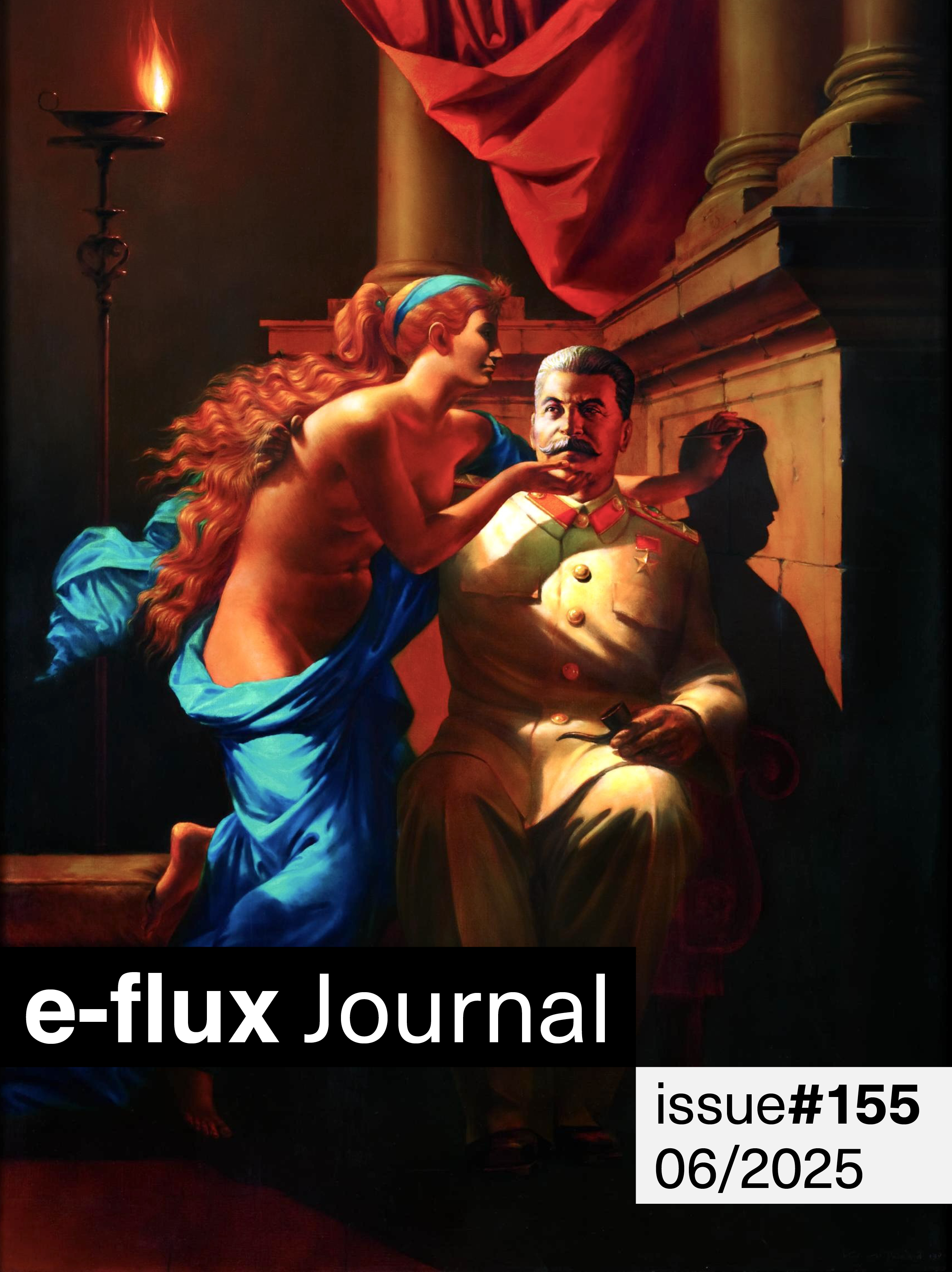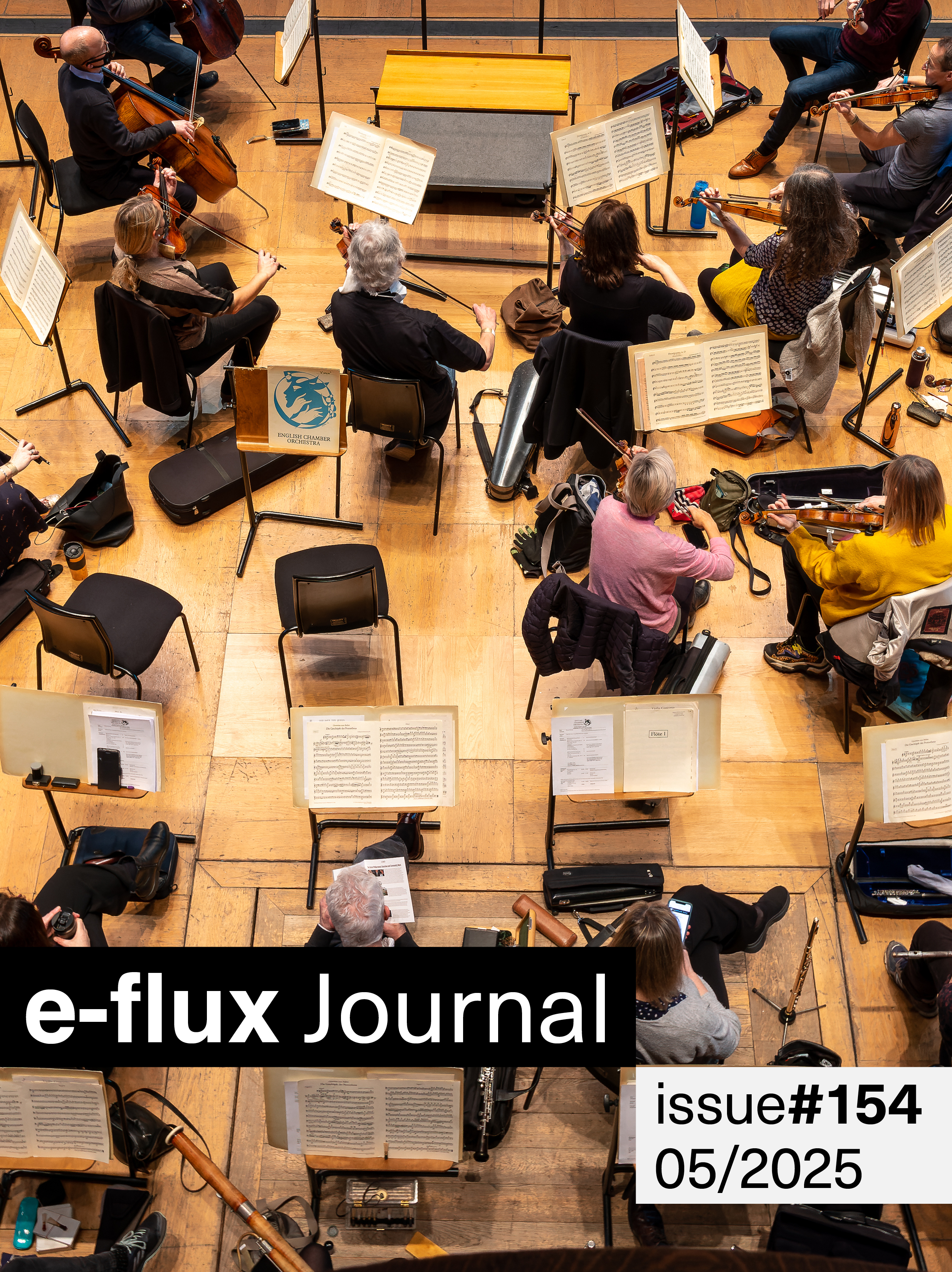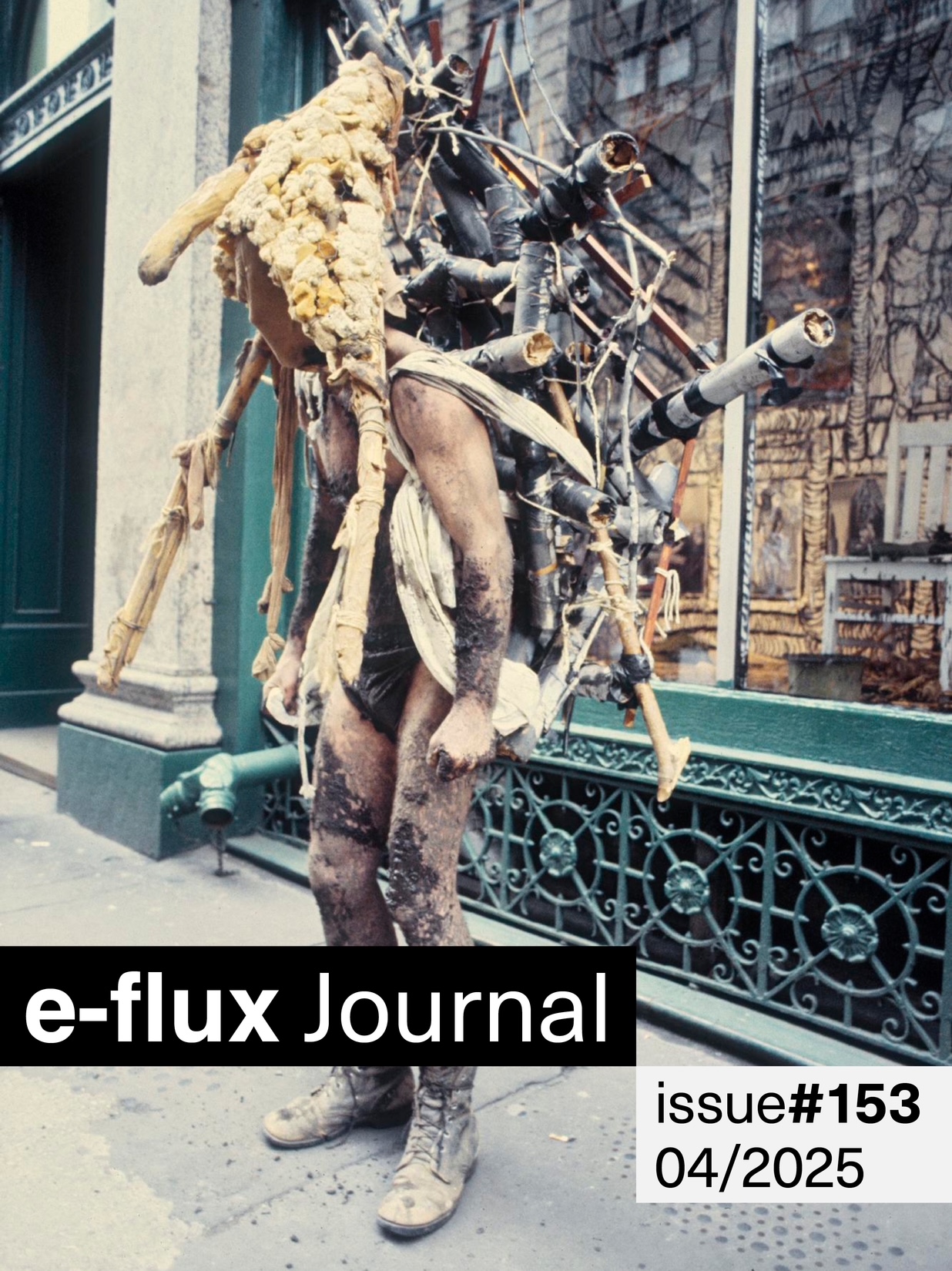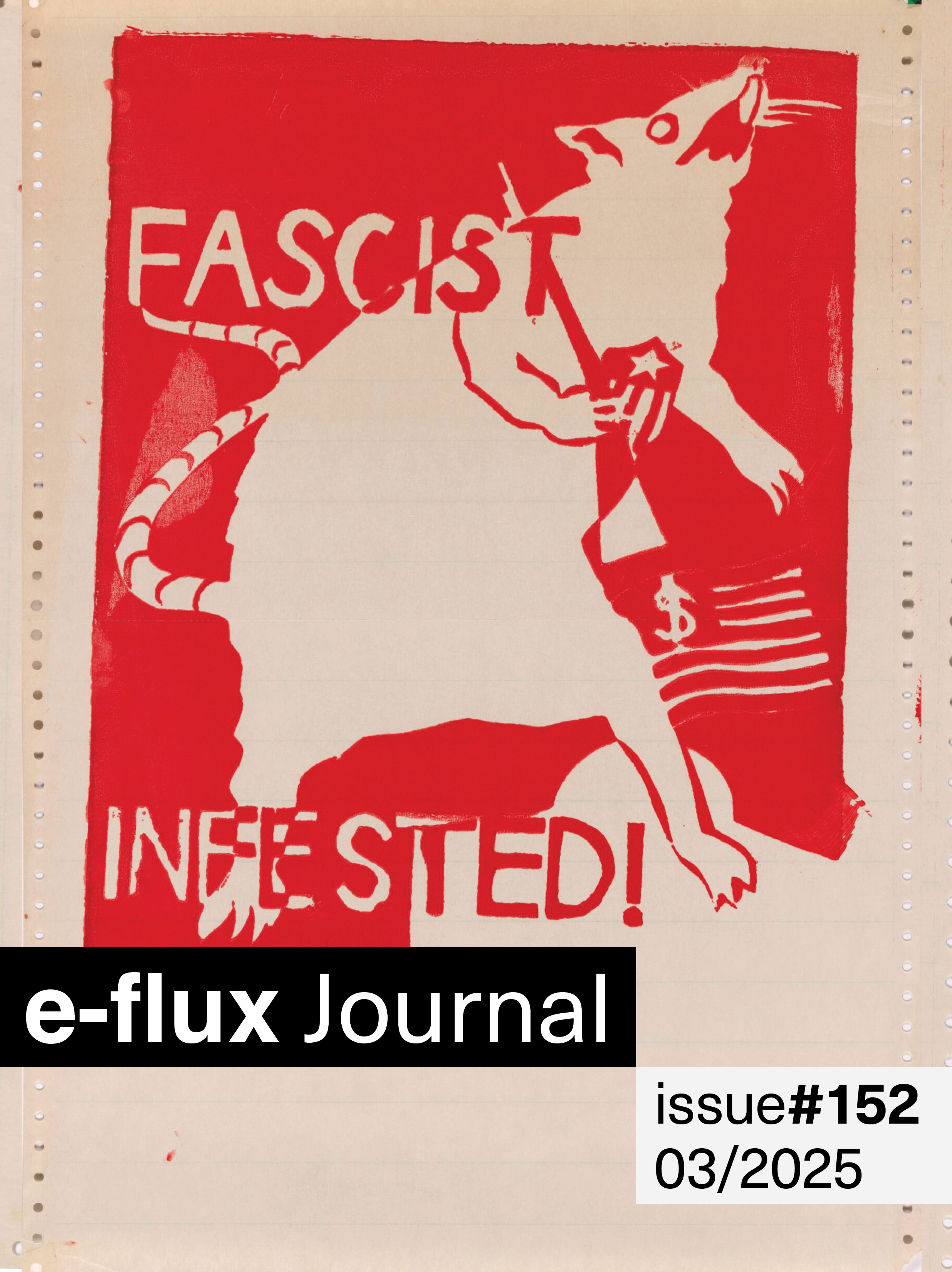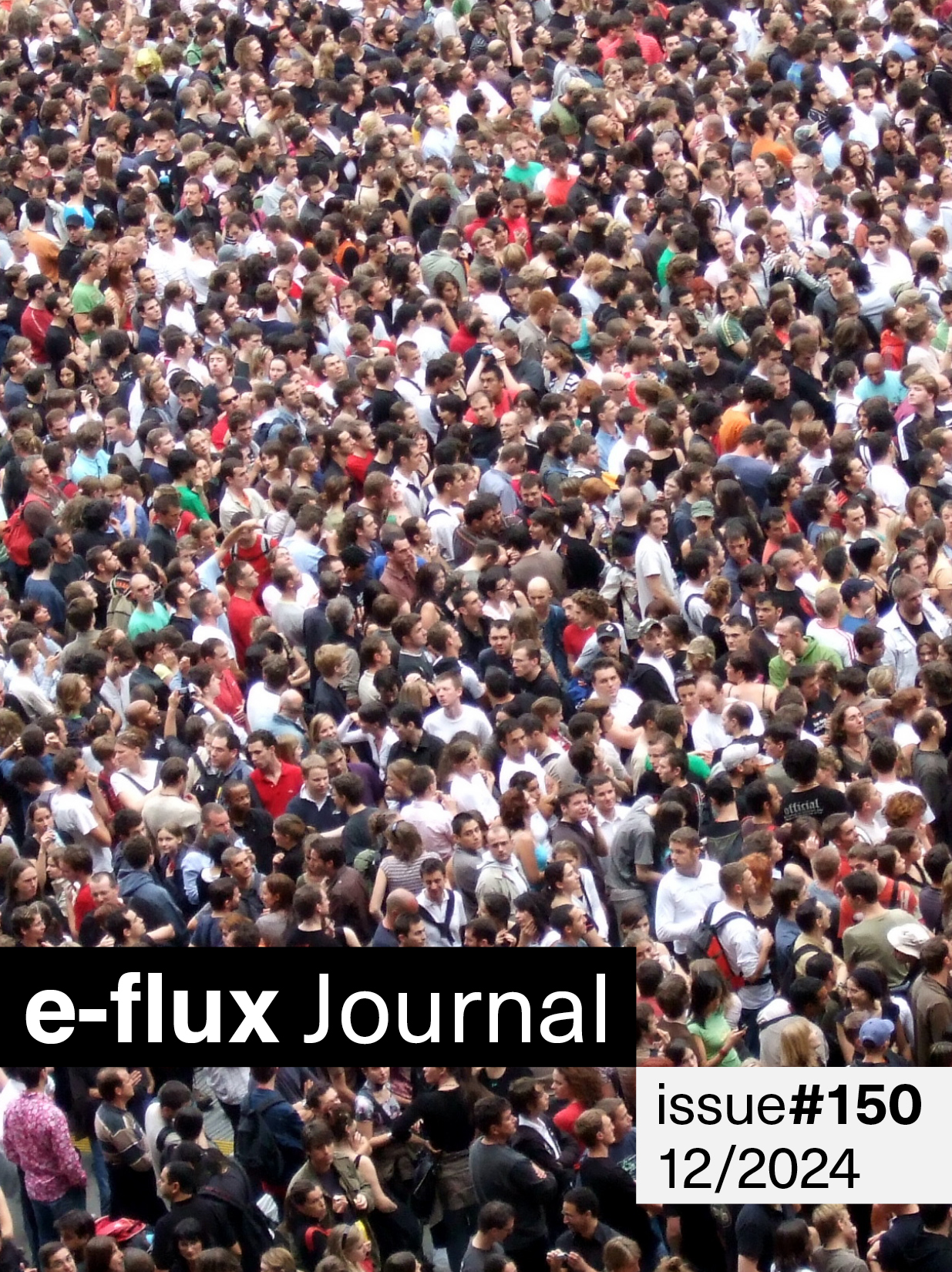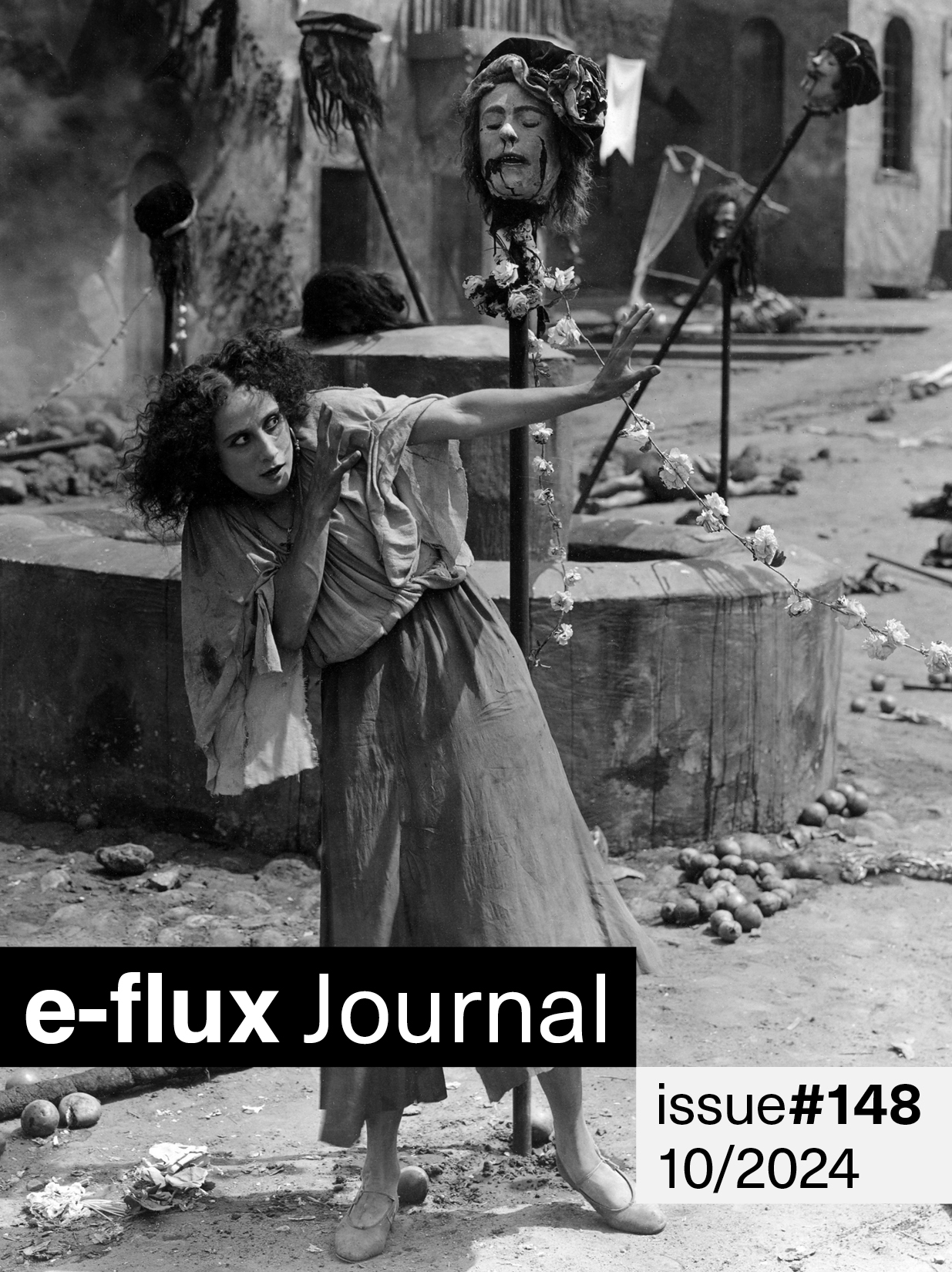e-flux journal issue 140
with Thotti, Joan Kee and Serubiri Moses, Rizvana Bradley, Katherine C. M. Adams, Julia Eilers Smith, Hija de Perra, David Morris, and McKenzie Wark
The illogic of exclusion and exception is seductive. Perhaps we will all know ourselves better when we advertise our own place in the world by taking sides with regimes that masquerade as fixed identities and project illusory strength while actually being irreparably fragmented from within, just like we all are. The oppressed, on the other hand, know that a much larger struggle can only be sustained by distinguishing faithful from false witnesses among their own ranks as well as the enemy’s. True identity is forged by how we choose to bear witness, by what endures and grows in meaning as it is transmitted.
Last month, the image of paragliders escaping the world’s largest open-air prison soon turned to horror when news spread of Hamas’s massacre and their kidnapping of hostages. Within days, in Gaza, entire families spanning generations were being wiped from the civil registry by Israel’s military, to a point where no next of kin remain to identify the dead, let alone mourn them—a fate deemed merciful by some survivors, whose own grief is drowned out by the unrelenting scale of carnage. Meanwhile, everywhere, something else is being drowned out. That is the ability to discern that the story of two peoples or two identities at war serves to mask the desperate projections of power needed to captivate and unify fragmented populations, as a distraction from that power’s own layers of internal ruin.
The government in Israel today is well-known to be the most right-wing in its history, openly advancing a modern ethno-state. The regime is so divisive that a record number of Israelis have emigrated abroad, all too aware that their increasingly identitarian citizenship requires significant military force to renew legitimacy through constant war. Feeding off this symbiotically are opportunistic paramilitaries laying claim to the Palestinian struggle for liberation, and governments of various spineless states who court proxies in an all-too-effective strategy to render liberation, let alone existence, impossible.
Indeed, the only inclusive prospect of identitarian warfare seems to be a war that envelops everyone, of all against all. There will be no heroes in this, but we can at least protect ourselves and whomever else we can from the monstrous lies of identity that our rage and grief would lead us to seek comfort in. The weaponization and provincialization of something as complex and uncontrollable as identity is heretical to our very formation as historical beings, to the contradictions that constitute our inherited and lived identities, and which only become empty, feral, racist, and self-annihilating when purified.
In the 140th issue of e-flux journal, Thotti writes that the eternal recurrence of language, myth, and image traps human experience in a cycle of sameness and alienation. The essay begins with chalk on a blackboard. A chasm between the chalk’s elemental origins and the (Portuguese) grammar it writes reveals how language can erase agency from action and make the subject disappear. A rhythmic refrain, “Who pierced the eyes of Assum Preto?,” asks who blinded the blackbird from Brazilian folklore to make it sing a more moving song. History and myth intertwine in a perpetual dance, but Thotti shows a way out. Seeing time and existence through the eyes of a “bicho,” or “beast,” could transcend the limits of language. Such vision is of mortal necessity. To be a bicho is to be “open to time as prescribed by spatial coexistence with the whole of the cosmos.”
Joan Kee’s conversation with Serubiri Moses illuminates the global relevance of reading the history of Afro Asia from a geometric perspective. Indeed, the twentieth century witnessed significant African and Asian fellowship in art and postcolonial politics. Today, close readings of concrete artworks can offer a perspective that transcends boundaries and regional classifications in global art history. Kee and Moses discuss the lack of recognition and sustained analysis of Maoism’s immense influence on shaping that history. They also explore the concept of friendship as a key element in understanding Afro Asia and its potential to challenge prevailing notions of power and opposition, especially in the realm of art.
Rizvana Bradley’s “The Critique of Form” examines the entangled relationship between black critical theory, black artistic practice, and traditional formalism—in particular the skepticism and extractive intent with which formalism has approached black intellectual and artistic forms. Bradley argues that formalism, while useful, should also be a tool for its own deconstruction. Blackness, inherently dissimulative and without ontology, poses an inescapable challenge to form, disrupting and questioning the order of forms. Bradley’s approach does not promise redemption or emancipation but lingers with the enduring questions that arise from the entanglement of aesthetics and violence, ultimately demonstrating how blackness is the condition of (im)possibility for form.
Katherine C. M. Adams considers the concept of “mulatoness” in film and visual culture, offering a counterpoint to Frantz Fanon’s ideas about the impact of cinematic representation on Black subjectivity. Adams examines Kathleen Collins’s 1982 film Losing Ground, showing how it takes the trope of the “tragic mulatto”and turns over in ways that challenge racial and social expectations—both within the film’s narrative and in its reception. In Adams’s analysis, the tragic mulatto figure serves as a structuring formula that exposes the limitations of discourse on racial “hybridity.” She suggests that the trope could point toward new modes of understanding Blackness beyond essentialist or ontological categories.
Julia Eilers Smith discusses the life and work of Hija de Perra (HdP), a performer, activist, and writer prominent in the alternative nightlife scene of early-2000s Santiago. In her lifetime, HdP championed LGTBQ+ rights in a Chile transitioning out of dictatorship, and at the same time argued time and again for nuance within queer discourse. HdP’s performances and academic engagements alike were transgressive and eccentric, embracing a multi-sexual identity while resisting assimilation into mainstream culture and liberal politics.
Hija de Perra’s influential work “Filthy Interpretations” is published here in both English and the original Spanish. In the lecture-turned-essay, HdP critiques the one-size-fits-all approach of queer theory in Latin America and argues for the recognition of culturally specific conceptions of nonnormative identities. Her vision lays out paths for queer theory to fulfill its utopian promise of supporting a complex and multitudinous ecosystem for queer life. Reading HdP today underscores her lasting impact in the Southern Cone and beyond, preserving her uncompromising politics of dissidence.
David Morris charts the history and impact of Artists for Democracy (AFD), formed in London in 1974 by artists and cultural workers from multiple countries to support global decolonization movements. In the first of a two-part essay, Morris details the challenges AFD faced in a declining imperial Britain, highlighting the group’s opposition to the nation’s racialized policies and the broader context of London as an imperial center. Morris underscores the group’s fluid definition of “artist” and artistic activity. The AFD story calls for art and culture to be viewed as collective endeavors, emphasizing the vital importance of group work and interconnectedness.
McKenzie Wark’s “Critical (Auto) Theory” is a masterclass in the intersections of labor and capital in the world of book publishing. How can a bad Marxist manage to express herself, sell work, and survive at the same time? Wark calls for a down-to-earth, flesh-and-blood Marxism that engages with the contradictions of living within the commodity form. She also gives a living history of autotextual tactics, highlighting how the intertwining of the author’s self and the work can create space for those excluded or marginalized from literary norms.
—Editors
Thotti—Who Pierced the Eyes of Assum Preto?
Even if images today are flexible and manipulated, and even if passive spectacle is over and we have all become producers of images, we are always reacting against already established image-myths, and suspicion, revolts, and fragmentations only actualize their exhausted bones. But rather than attempt a media theory, here I still write to merely answer the question: Who pierced the eyes of Assum Preto?
Joan Kee and Serubiri Moses—Afro Asia and the Ethics of Friendship
Thinking of Afro Asia in connection with the language of Black Power has me thinking more intently about what we can draw from the distinctions between sovereignty, self-determination, and another core Black Power term, self-defense. It has us consider sovereignty as quite distinct from autonomy; sovereignty itself is a refusal to surrender one’s humanity or claims to that which enable that humanity.
Rizvana Bradley—The Critique of Form (excerpted from Anteaesthetics)
The unwieldy, internally variegated, and contested traditions that one might nevertheless nominate as black critical theory and black artistic practice, respectively, have had difficult relationships with various traditions of scholarly and aesthetic formalism (though these are, of course, hardly discrete designations). To begin with, the intellectual and artistic forms associated with blackness have typically been regarded by established traditions of formalism with, at best, skepticism.
Katherine C. M. Adams—From Tragic Mulatto to Cinematic Blackout
The cumulative process of “mulatto production” constructs various no-man’s-lands within otherwise emancipatory cinema, film, and visual culture, from which certain kinds of Black female subjectivity must remain absent. While Fanon waits for himself in the cinema, at first blush Fanon’s “woman of color” has nowhere to look for her own image. Losing Ground is radical in how it breaks with this model.
Julia Eilers Smith—Hija de Perra: Writings from a Poor, Aspirational, Sudaca, Third World Perspective
Even though Hija de Perra calls for the recognition of a culturally specific conception of what was called “queer” in Latin America, throughout her work she always remained sharply critical of nation-building perspectives. Indeed, she offered a framework for a hemispheric approach that maintained vigilance against the uncritical implementation of nation-based forms of theoretical and cultural knowledge.
Hija de Perra—Filthy Interpretations: How “Queer Theory” Colonizes Our Poor, Aspirational, South American, Third World Context …
It would be in our collective best interest to abandon old definitions. In the same way that you discovered the truth about Santa Claus and the Easter Bunny, you now discover that there’s been a frame-up—a made-up history, an idealized version of all those things you never wanted to reflect on before and which you adored as if they were gods.
David Morris—Precarious Solidarities: Artists for Democracy in Historical Perspective, Part 1
The story of AFD may serve as a reminder of alternative, pre-identitarian political sensibilities. This can be seen, for instance, in the group’s ready expression of common cause with peoples across vast cultural, geographic, and geopolitical differences, or in the way their Whitfield Street squat was a “queer” space without ever considering itself as such. Such an approach to organizing a space or collective points to a politics grounded in relationships within and across difference, and an understanding that individualized identities can function as barriers rather than a basis for solidarity.
McKenzie Wark—Critical (Auto) Theory
The most interesting autotextual writing does one of two things, or even better, both: shows how selves are made, and makes room for a kind of self that otherwise barely gets to exist.

